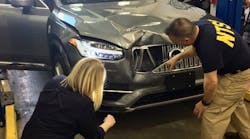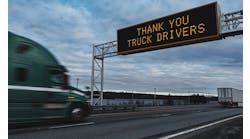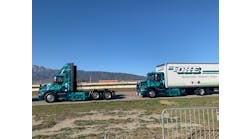It has become the car accident heard around the world. And more than a week later, there are more opinions than answers about the fatal crash involving the self-driving Uber passenger car in Arizona.
The reactions highlight the intense level of scrutiny that follow imperfect autonomous technology, compared with more error-prone human driving.
What’s clear is that Uber’s self-driving Volvo SUV struck and killed a 49-year-old woman who was crossing a street at night pushing a bicycle. The vehicle was traveling about 40 mph, and had a human back-up driver at the wheel.
Both the local Tempe police and National Transportation Safety Board (NTSB) are investigating. Uber, which has suspended self-driving tests, said it is “fully cooperating with local authorities in their investigation of this incident."
That cooperation may be critical, with so many details unknown.
After the crash, Tempe Police Chief Sylvia Moir told the San Francisco Chronicle the SUV likely would not be found at fault. One reason was because video of the accident shows the victim suddenly emerging from darkness, apparently giving the vehicle or driver little time to react.
However, the video also shows the man behind the wheel looking down just prior to the crash. That has led some experts to suggest he was distracted, or relying too heavily on the self-driving system.
Others have hinted the driver may have simply been viewing a video monitor inside the vehicle. It's not yet been made public if the vehicle had internal video.
Regardless, Uber has drawn criticism for only having one human driver in its self-driving test vehicles. Other companies use two, though there was no obvious evidence that would have changed this tragic outcome.
Questions have also been raised about the driver. Court records indicate someone with the same name and birth date spent time in prison for felony convictions prior to working for Uber. The NTSB and local police have not yet commented on whether it is the same person.
If that is the case, it may more raise questions with Uber’s hiring decisions than this particular accident.
It could be many months before a true indication of how this tragedy unfolded takes shape. The NTSB has said its findings will only be issued after “a comprehensive investigation of the gathered information and data analysis are complete.”
That is important for the future of the autonomous-driving movement – which proponents have tried to remind people is about making the roads safer. Chris Urmson, co-founder and CEO of Aurora Innovation and the former head of Google's automated vehicle project, made that point at an economic summit last week.
"Globally 1.2 million people die on the roads," Urmson said. "In the U.S. that's the equivalent of a 737 crashing every day. We wouldn't accept that in air travel, and yet we do on the roads of America every day, so I think the big picture we have to focus on is that the status quo is not acceptable."
Hopefully, we will one day look back upon this tragedy as another key milestone in making that a reality.




